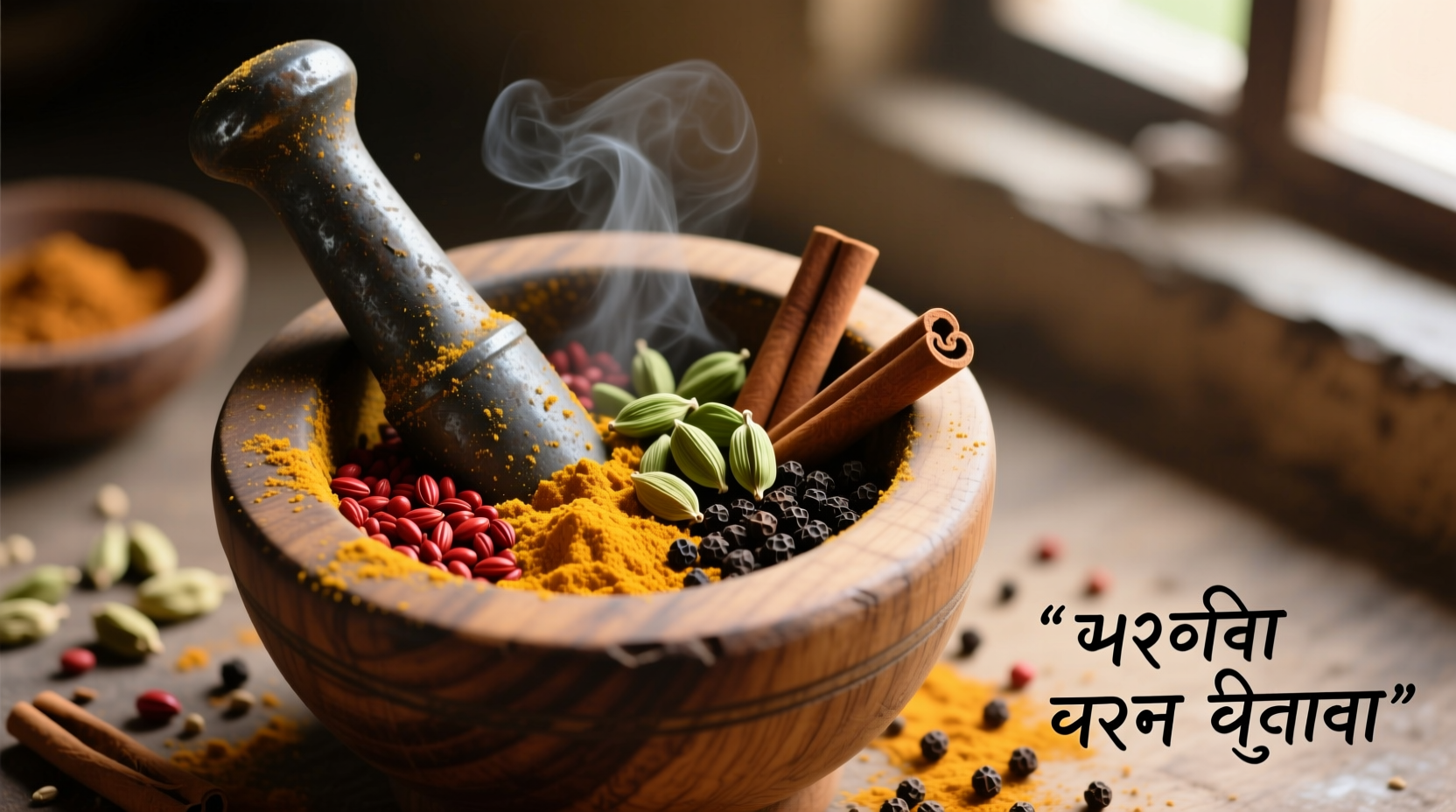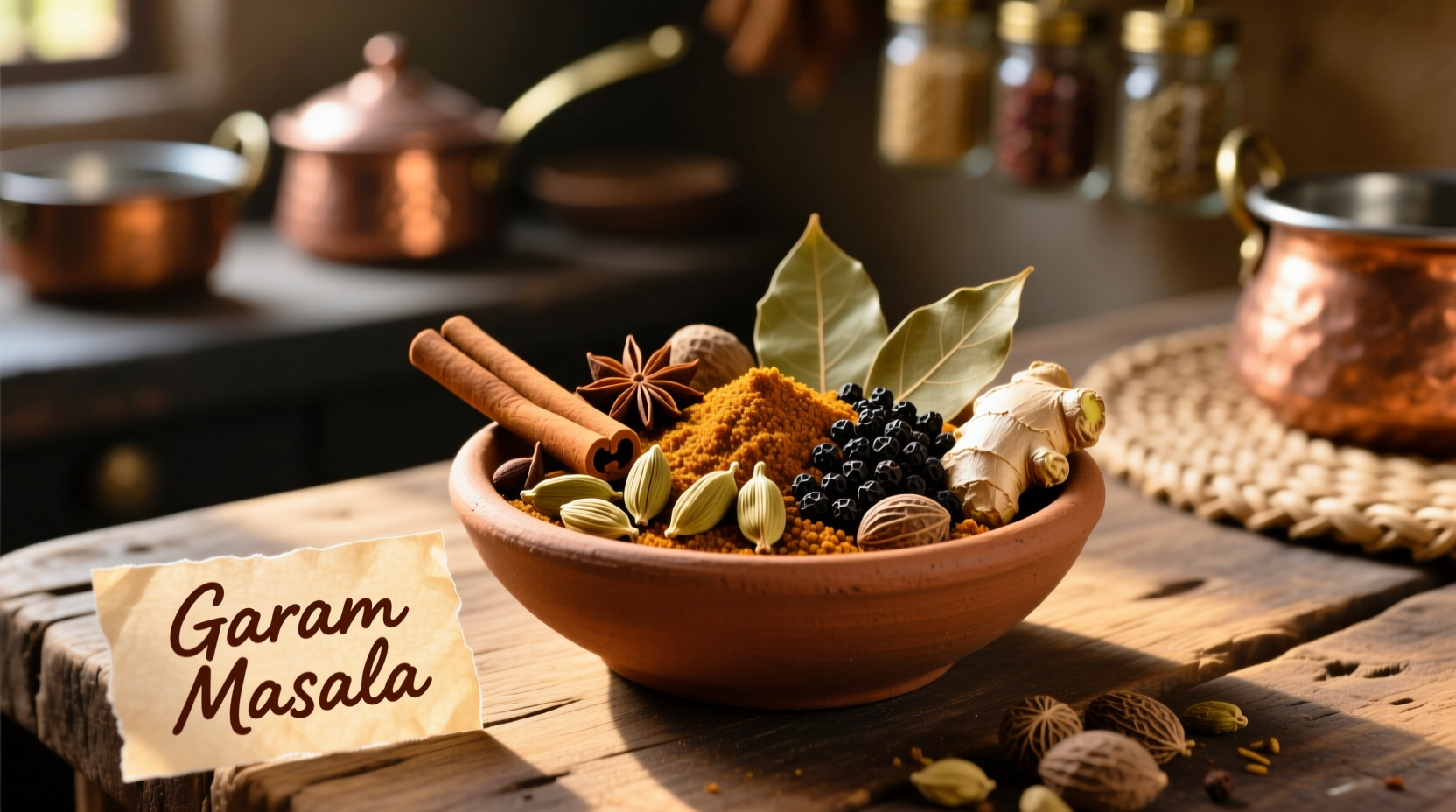Discover exactly what spices make up authentic garam masala and how regional variations transform this essential Indian blend. Whether you're a home cook seeking authentic flavors or a culinary enthusiast exploring spice traditions, this guide delivers precise ingredient breakdowns, practical usage tips, and historical context you won't find elsewhere.
The Essential Spices in Traditional Garam Masala
While recipes vary across India's diverse regions, garam masala always centers around warming spices that create its distinctive flavor profile. The term "garam" means "warm" in Hindi, referring to the thermal properties these spices impart rather than actual heat. Unlike chili-based spice mixes, garam masala provides depth and complexity without significant spiciness.
| Core Spice | Proportion | Flavor Contribution | Traditional Preparation |
|---|---|---|---|
| Green Cardamom | 20-25% | Floral, citrus notes | Seeds extracted from pods |
| Cinnamon | 15-20% | Sweet warmth, woody base | Ceylon variety preferred |
| Coriander Seeds | 15-20% | Earthy, citrusy foundation | Dry roasted before grinding |
| Cloves | 10-15% | Pungent, intense warmth | Used sparingly for balance |
| Cumin Seeds | 10-15% | Earthy, nutty depth | Dry roasted until fragrant |
| Black Pepper | 5-10% | Subtle heat, pungency | Freshly cracked preferred |
Regional Variations Across India
Garam masala isn't a standardized blend but rather a culinary tradition that adapts to local tastes and available ingredients. Understanding these regional differences helps you select or create the perfect blend for specific dishes.
The evolution of garam masala reflects India's complex spice trade history. According to the Encyclopedia Britannica's documentation of the Spice Route, the blend developed differently in various regions based on historical trade connections. Northern regions incorporated more Persian-influenced spices like nutmeg and mace, while coastal areas developed lighter blends using locally available ingredients.
North Indian Garam Masala
Richer and warmer, featuring:
- Nutmeg and mace (1-2% each)
- Bay leaves (1-2)
- Higher cinnamon content (up to 25%)
- Often includes star anise
Preferred for meat dishes like butter chicken and rich curries. The National Geographic's culinary history research notes that Mughlai influences shaped this version during the 16th-18th centuries.
South Indian Garam Masala
Lighter and more aromatic, typically containing:
- Less cinnamon (10-15%)
- No nutmeg or mace
- Additional coriander (up to 25%)
- Sometimes includes fenugreek
Ideal for vegetable dishes and seafood preparations. This version developed separately from North Indian blends due to distinct regional spice availability and culinary traditions.

When and How to Use Garam Masala Properly
Many home cooks make critical mistakes with garam masala that diminish its flavor impact. Understanding context boundaries ensures you maximize this precious blend's potential.
Optimal Timing in Cooking
Add garam masala at these critical stages:
- Finishing touch: Sprinkle 1/2-1 teaspoon into finished curries (tempering with hot oil first)
- Marinades: Incorporate into yogurt-based meat marinades 2-4 hours before cooking
- Rice dishes: Add to hot oil before sautéing rice for biryani
Avoid adding garam masala at the beginning of cooking, as high heat destroys its delicate aromatic compounds. The American Chemical Society's research on spice chemistry confirms that volatile oils in cardamom and cinnamon degrade significantly after 10 minutes of simmering.
Storage and Freshness Guidelines
For maximum flavor retention:
- Store in airtight containers away from light and heat
- Use within 3 months for peak flavor (ground spices lose potency faster than whole)
- Buy whole spices and grind in small batches
- Freeze whole spices for long-term storage (up to 1 year)
Creating Authentic Homemade Garam Masala
Commercial blends often contain fillers and lose freshness during shipping. Making your own ensures superior flavor and lets you customize to your taste preferences.
Step-by-Step Preparation
- Dry roast whole spices separately over medium heat until fragrant (30-60 seconds each)
- Cool completely before grinding (warm spices create steam that reduces shelf life)
- Grind to fine powder using a dedicated spice grinder or mortar and pestle
- Sift through fine mesh to ensure uniform texture
- Store in dark glass container with tight-sealing lid
Customization Options for Specific Dishes
Tailor your blend for particular applications:
- For meat dishes: Increase black pepper and cloves by 25%
- For vegetarian curries: Boost coriander and cardamom content
- For desserts: Create a sweet version with extra cinnamon and cardamom, omitting cumin
- For street food: Add 1/4 teaspoon cayenne for chaat masala variation
Avoiding Common Garam Masala Mistakes
Even experienced cooks sometimes misuse this essential blend. Watch for these pitfalls:
- Overuse: More than 1 teaspoon per pound of main ingredient overwhelms other flavors
- Substitution confusion: Garam masala isn't curry powder - they serve different culinary purposes
- Heat exposure: Adding to boiling liquid destroys delicate aromatic compounds
- Stale blends: Pre-ground versions lose 50% of volatile oils within 6 weeks
Remember that garam masala should complement, not dominate, your dish. The perfect amount creates subtle warmth that enhances other ingredients rather than masking them. Professional chefs typically add it in two stages - a small amount during cooking and a finishing sprinkle just before serving.











 浙公网安备
33010002000092号
浙公网安备
33010002000092号 浙B2-20120091-4
浙B2-20120091-4